Imagine walking the bustling streets of ancient Rome, feeling the pulse of a civilization that profoundly shaped the Western world. Forget dusty history books; we are about to delve into the tangible remnants of this colossal empire. Think of it as meticulous detective work, where ancient Roman artifacts serve as crucial clues, revealing profound insights into daily life, power structures, cultural values, and the very fabric of their society. These symbols held importance, as seen in these insights about Roman symbols. We will explore everything from the architectural marvel of the Colosseum, where gladiators once captivated thousands, to the intricate Roman coins used for commerce. Trajan’s Column will unveil the Romans’ military might and propaganda, while exquisite mosaics offer peeks into their homes and favorite stories. These aren’t just old objects; they are meticulously preserved time capsules, brimming with secrets waiting to be discovered, offering a direct link to the vibrant heart of Roman civilization.
Unearthing Rome’s Grandeur: Engineering and Public Life
Our journey into the Roman Empire begins with its monumental achievements—structures that not only served practical purposes but also projected immense power and showcased unparalleled Roman engineering prowess. These architectural wonders stand as enduring symbols of Rome’s ambition and its masterful command over its environment.
The Colosseum: Echoes of Spectacle and Power
Picture yourself inside the Colosseum, the Roman sun beating down, the air thick with the roar of tens of thousands, eagerly awaiting gladiatorial combat. This iconic amphitheater, known as the Flavian Amphitheatre, wasn’t merely a venue for brutal entertainment; it was a monumental statement of Roman engineering and an undeniable symbol of imperial authority. Constructed in the 1st century CE, this colossal structure could hold an estimated 50,000 to 80,000 spectators, making it the largest amphitheater ever built. Emperors skillfully utilized public games, often referred to as “bread and circuses” (panem et circenses), to maintain civic contentment and reinforce their control over the masses.
The Colosseum offered a unique social microcosm. Consider the diverse crowd filling the stands:
| Element | Description |
| :—— | :———- |
| Social Stratum | Distinctive clothing differentiated social classes, reflecting their standing. Seating arrangements were strictly hierarchical, reinforcing social order. |
| Wealthy Romans | Donned fine wool or silk togas, adorned with elaborate hairstyles and intricate Roman jewelry. They occupied the lower, shaded tiers, closest to the action. |
| Lower Classes | Typically wore simpler tunics, made from practical wool or linen. They sat in the upper, sun-exposed sections, demonstrating their societal position. |
| Footwear | Varied from basic sandals to more refined leather shoes, signaling status and profession. |
| Accessories | Rings, necklaces, and bracelets, often crafted from gold or silver and inlaid with gemstones, were not merely decorative but potent indicators of wealth and personal identity. |
| Protection | Wide-brimmed hats or veils were commonly used for sun protection, a practical necessity in the open-air arena. A massive awning (velarium) could be deployed by sailors to shade the audience. |
| Hair and Makeup | Women often showcased elaborate hairstyles, sometimes involving complex braiding or extensions. Men usually maintained short, neat hair. Makeup enhanced features and lightened complexions, particularly for women. |
| Personal Status | Clothing and adornments clearly communicated an individual’s social position and sense of self, a vital aspect of public life in Roman society. |
The Colosseum stands as a powerful testament to Roman architecture and their mastery of large-scale construction, utilizing concrete and an advanced system of arches. Its elaborate underground network (hypogeum) for animals, gladiators, and scenery changes further demonstrates remarkable ingenuity. It vividly illustrates how public spectacles played a central role in both Roman politics and daily life, allowing emperors to project an image of beneficent power. This structure, a remarkable feat of structural design, continues to captivate visitors, allowing them to visualize the grandeur of ancient times.
The Roman Aqueducts: Engineering a Water Empire
The very lifeblood of ancient Rome flowed through the magnificent Roman aqueducts, a testament to the Romans’ unmatched expertise in water supply and engineering. These elaborate systems were vital for sustaining Rome’s vast population, ensuring a consistent flow of fresh water into urban areas, public baths, and fountains. The ingenuity lay in their construction: a gradient design allowed water to flow smoothly from distant sources, often over dozens of miles, through precisely engineered arches and tunnels.
The most famous of these, the Aqua Claudia, transported water from sources over 40 miles away. These aqueducts significantly improved public health and hygiene in ancient Rome, serving as foundational models for modern water supply systems. They exemplify the Roman commitment to public works and the practical application of advanced engineering to improve daily life. Witnessing the remnants of these structures across the Roman landscape underscores the logistical brilliance that underpinned the empire’s growth and stability.
The Pantheon: A Dome of Innovation
Originally built as a temple dedicated to all the gods of ancient Rome, the Pantheon is a stunning architectural marvel that continues to inspire awe. Constructed by Emperor Hadrian in the 2nd century CE, it is renowned for its colossal concrete dome, an architectural feat that remained unmatched for centuries. The oculus, a circular opening at the apex of the dome, allows sunlight to filter into the interior, creating a dramatic and awe-inspiring effect, symbolically connecting the worshippers to the heavens.
Over time, the Pantheon was repurposed as a Christian church, which crucially preserved its remarkable structure. Its groundbreaking design served as a precursor to modern domes and greatly influenced countless architects and builders throughout history, including Renaissance masters like Brunelleschi. The Pantheon’s legacy continues as a place of both historical significance and profound architectural inspiration, showcasing the Romans’ daring and innovative approach to construction.
The Vast Roman Road Network: Arteries of Empire
The extensive network of Roman roads, known as the “Viae Romanae,” was far more than mere pathways; it was the circulatory system of the Roman Empire, facilitating not only trade and commerce but also the swift movement of Roman legions, information, and administrators. These roads stretched across the vast empire, connecting far-flung provinces to the heart of Rome. The Roman road system is famed for its durable construction, featuring a layered base of concrete, gravel, and stone, which allowed for rapid and reliable transit, even in adverse weather.
These meticulously engineered roads were essential to the empire’s administration, enabling the efficient movement of goods, information, and people, crucial for maintaining control over such a vast territory. The most famous of these, the Appian Way (Via Appia), played a crucial role in connecting Rome to the southern regions of Italy. The enduring legacy of the Roman road system can still be traced in modern highways and infrastructure, a testament to their foresight and construction expertise.
Whispers of Power: Imperial and Military Narratives
Ancient Roman artifacts offer a profound glimpse into the political landscape, military might, and the carefully curated image of emperors. These objects served as powerful tools of propaganda, ensuring the emperor’s authority and achievements were broadcast far and wide.
Trajan’s Column: A Triumphant Marble Scroll
Picture a colossal pillar, spiraling upwards, adorned with incredibly detailed carvings from base to capital. This is Trajan’s Column, a monumental structure within Trajan’s Forum, erected in 113 CE to commemorate Emperor Trajan’s definitive victories over Dacia (modern-day Romania). It functions like an epic, 100-foot-tall historical narrative in stone, illustrating the entire Dacian Wars, from meticulous preparations to bridge construction and fierce battles. This extraordinary piece of Roman art and engineering remains a subject of historical debate, particularly regarding the precise balance between its historical accuracy and its role as sophisticated Roman propaganda.
What tangible insights does this magnificent column provide? It stands as a testament to the Romans’ exceptional artistic skill and their mastery of visual storytelling. The continuous frieze, approximately 625 feet long if uncoiled, features over 2,500 meticulously carved figures. This offers an unparalleled glimpse into Roman military tactics, equipment (such as the gladius and scutum), logistical prowess (e.g., river crossings, fort construction), and the daily life of soldiers. Crucially, Trajan’s Column showcases how Roman rulers strategically employed grand public art to shape their legacies and project an image of unstoppable imperial power, emphasizing discipline and organization over mere battlefield carnage.
Roman Coins: Tiny Discs, Powerful Messages
Consider Roman coins not just as a medium of exchange, but as miniature billboards circulating throughout the Roman economy. These small, intricately designed discs, frequently crafted from silver or bronze, functioned as the empire’s primary means of mass communication, effectively disseminating political messages and imperial influence across vast territories. Each coin typically featured the emperor’s portrait on the obverse (front), while the reverse showcased images representing essential Roman values, significant military victories, or revered deities, often accompanied by Latin inscriptions.
What profound insights do these humble coins offer into the Roman political landscape? They clearly communicated who held power, broadcasting the emperor’s image and authority far and wide. Furthermore, these artifacts provide invaluable information about Roman trade networks and economic conditions, illustrating the flow of goods and wealth across the empire. The imagery chosen for the coins also reveals what the Romans collectively deemed important, from their military prowess and imperial expansion to their religious beliefs and the abundance of their land, offering a tangible link to their conceptual world. The debasement of currency (reducing precious metal content) also provides crucial evidence of economic stress and inflation during periods of imperial instability.
Imperial and Public Statuary: Power in Stone
The art of Roman statuary is a powerful testament to the empire’s commitment to preserving its historical and mythological figures in timeless beauty. Crafted from marble and bronze, Roman statues depicted emperors, gods, triumphant generals, and revered individuals. These lifelike representations aimed to exude power, virtue, and sometimes, a divine connection, often placed in public spaces to reinforce imperial ideals.
Notable examples include the Augustus of Prima Porta, a marble statue of Emperor Augustus, which portrays him in an idealized form, blending classical Greek aesthetics with Roman verism (realism). His armored breastplate is rich with symbolic imagery depicting Roman victories and divine favor. The Equestrian Statue of Marcus Aurelius is a rare surviving bronze depiction of an emperor on horseback, embodying wisdom and military command. Unlike many bronze statues, it was preserved because it was mistakenly believed to depict Constantine, the first Christian emperor. Roman busts, intricately carved portraits, played a vital role in Roman culture by honoring and remembering influential personalities. The Capitoline Brutus (though debated) portrays a stern, veristic depiction reflecting Roman emphasis on civic virtue. These statues served not only as tributes but also conveyed the aesthetics and values of Roman culture—a convergence of Greek artistic influences adapted to serve Roman imperial narratives.
Triumphal Arches: Gates of Glory
Triumphal arches served as monumental gateways celebrating Roman military victories and projecting imperial power throughout the empire. The Arch of Titus, constructed in Rome in the 1st century CE, stands as a prime example. While primarily an architectural masterpiece, its detailed relief sculptures transform it into a vivid historical record.
The arch vividly depicts the Roman soldiers’ procession with spoils from the Jewish Temple in Jerusalem following the sacking of Jerusalem in 70 CE. This artifact commemorates Roman military might and imperial power, while also providing valuable insights into the cultural and religious aspects of the time, including the display of captured religious artifacts as symbols of Roman dominance. These arches were carefully designed public statements, intended to awe and remind both citizens and visitors of Rome’s military supremacy.
Glimpses of Daily Life and Artistry
Beyond the grand monuments of state, a wealth of ancient Roman artifacts reveals the intricacies of daily existence, personal aesthetics, and the vibrant artistic expressions of ordinary and elite Romans alike.
Mosaics and Frescoes: Windows to Roman Daily Life
Imagine stepping into a luxurious Roman villa, where the floors and walls are adorned with vivid mosaics and breathtaking frescoes (frescos – paintings applied directly onto wet plaster). These weren’t merely decorative elements; they served as compelling windows into the vibrant private world of the Romans. Mosaics, meticulously crafted from countless tiny pieces of colored stone, glass, or pottery (tesserae), depicted an astonishing variety of scenes, ranging from intricate mythological narratives (like the famous Alexander Mosaic from Pompeii) to detailed representations of everyday life, still lifes, and landscapes. Frescoes, with their vibrant pigments, injected color and life into interior spaces, transforming ordinary rooms into captivating environments.
What do these stunning artworks reveal about Roman culture? They clearly indicate that the Romans highly valued beauty and integrated art seamlessly into their domestic environments. These pieces offer crucial clues about their beliefs, their favorite stories, their appreciation for entertainment (e.g., gladiatorial mosaics), and their daily routines. The specific subjects chosen for these depictions further illuminate what the Romans considered important, entertaining, and worth immortalizing within their homes. The remarkably preserved frescoes in Pompeii, buried by Mount Vesuvius in 79 CE, provide an unparalleled glimpse into the domestic aesthetics of a Roman city frozen in time.
Roman Jewelry: Adornment, Status, and Identity
From shimmering gold necklaces to intricate signet rings, elaborate brooches (fibulae), and delicate earrings, Roman jewelry was far more than simple adornment; it was a potent symbol of wealth, social status, and personal identity. Crafted from precious metals like high-carat gold and silver, and often adorned with exquisite gemstones like pearls, emeralds, sapphires, and garnets, these intricate pieces were worn by both men and women. The precious materials utilized, the extraordinary craftsmanship involved, and the symbolic motifs (e.g., serpents, dolphins, deities) incorporated into each piece collectively spoke volumes about the wearer. This “bling” from the ancient world was a sophisticated language of its own.
What narratives does Roman jewelry convey about Roman society? It vividly illustrates the Romans’ deep concern for personal appearance and the pronounced significance of social hierarchy within their culture. The diverse designs and chosen materials reveal prevailing tastes and the myriad cultural influences that permeated the Roman Empire, with designs often mirroring trends from Egypt and the Near East. Ultimately, Roman jewelry provided individuals with a powerful means to express their personal identity, commemorate events, and visibly display their prosperity.
Roman Pottery and Glassware: Utensil to Art
Roman pottery represents both the utilitarian and artistic aspects of daily life in ancient Rome. These versatile vessels, which included amphorae, plates, bowls, and jars of various shapes and sizes, were crafted from clay and used for a multitude of purposes—from cooking and storage to transportation and dining. They were not only functional but often displayed intricate designs, stamps, and decorations that reveal regional styles and trade patterns. Amphorae, for example, were essential for storing and transporting liquids like wine and olive oil across vast distances.
Roman glassware is a testament to the artistry and craftsmanship of ancient Roman glassblowers. These delicate glass vessels and objects served both functional and decorative purposes. Roman glassworkers were known for their skill in creating intricate and colorful glassware, often using techniques like blowing and molding. Roman glass items included drinking vessels (cups, goblets), decorative pieces (perfume bottles, vases), and even window panes. What sets Roman glassware apart is its stunning array of shapes, colors, and patterns, showcasing the Romans’ innovation in glass production, particularly the development of clear glass and mosaic glass. Both pottery and glassware artifacts provide invaluable insights into daily life, trade, economic specialization, and the artistic tastes of the time.
Household Items and Baths: Comforts of Roman Living
Roman household items encompass a wide range of everyday objects that made life in ancient Rome functional and comfortable, reflecting a blend of practicality and aesthetic appeal. These included lamps for lighting, utensils for dining, and furniture for various purposes. Roman oil lamps, for example, were not just sources of light but often featured ornate designs and patterns depicting mythological scenes or animals, adding to the ambiance of Roman homes. Utensils made from materials like bronze and silver showcased the Roman commitment to both functionality and aesthetic appeal, from medical instruments to culinary tools. Furniture items like couches (lecti) and tables were crafted with intricate details, serving both practical and decorative purposes.
Roman baths (thermae or balneae) were integral to the daily life of ancient Romans and held great cultural significance. These bathhouses served both practical hygiene needs and important social functions. Public baths, such as the monumental Baths of Caracalla, were elaborate structures with heated pools (caldaria), warm rooms (tepidaria), cold plunges (frigidaria), saunas (laconicum), exercise areas (palaestra), and libraries. They were vital social spaces, promoting interaction, relaxation, and business dealings. Artifacts from Roman baths include bathhouse architecture, advanced heating systems (hypocausts), and bathing equipment like strigils (scrapers for oil and dirt). They offer profound insights into the Romans’ advanced hygiene practices and their appreciation for communal and private leisure.
Symbols, Beliefs, and Unresolved Mysteries
Some ancient Roman artifacts transcend mere utility or historical record, venturing into the realm of myth, belief, and ongoing academic inquiry, challenging our understanding of their origins and meanings.
The Capitoline Wolf: A Symbol Shrouded in Time
The Capitoline Wolf, depicting a she-wolf nurturing the legendary twins Romulus and Remus—the mythical founders of Rome—remains one of the most enduring and recognizable symbols of the eternal city. Yet, this iconic bronze sculpture holds an intriguing secret: its precise origin is a subject of passionate academic debate. While some scholars, based on metallurgical analysis, assert that the wolf portion of the sculpture dates back to the older Etruscan period (5th century BCE), others contend it is a medieval creation (11th-12th century CE). The figures of the twins were, in fact, added later by a Renaissance artist, Antonio Pollaiuolo, in the late 15th century.
What compelling insights does the Capitoline Wolf offer? Regardless of its exact age, this potent imagery underscores the foundational importance of the Romulus and Remus myth to Roman identity and their collective understanding of the city’s origins. It powerfully symbolizes the very founding of Rome and the core values associated with its enduring legacy—strength, resilience, and divine favor. The ongoing academic debate surrounding its true age highlights that even highly recognizable historical relics can still hold unresolved mysteries, prompting continuous research and fresh interpretations of Roman history. As research continues to advance, our comprehension of these remarkable materials continues to deepen, delivering ever more comprehensive and fine-grained insights into the empire’s narrative.
Roman Sarcophagi: Journeys to the Afterlife
Roman sarcophagi, ornate stone coffins, were integral to ancient Roman burial practices, particularly among the elite. These elaborately carved burial containers not only served a practical purpose but also held immense cultural and artistic significance. Roman sarcophagi were meticulously crafted, often adorned with intricate reliefs depicting scenes from mythology, history, daily life, or the life of the deceased.
They were symbolic representations of the deceased’s journey to the afterlife, reflecting Roman beliefs, religious practices, and philosophical outlooks on death. Sarcophagi showcased the Romans’ mastery in stone carving and their ability to create visually captivating narratives that conveyed the social status, virtues, and aspirations of the departed. These artifacts are a rich source of historical information, shedding light on the social status, customs, and artistic sensibilities of the time. Roman sarcophagi remain admired for their artistic craftsmanship and their ability to encapsulate the essence of Roman culture, beliefs, and the reverence for the departed.
Roman Catacombs and Inscriptions: Echoes of Faith and Record
Roman catacombs are intricate underground burial networks, resembling subterranean cities of the dead. These vast labyrinthine complexes, primarily located near Rome, served as the final resting places for early Christians and Jews during times of religious persecution. Carved into the soft volcanic rock, they consist of extensive tunnels, chambers, and niches for internment. The catacombs are not just burial sites; they are also rich in artistic expressions, with frescoes and inscriptions that depict early Christian iconography, biblical stories, and religious beliefs, offering unique insights into the nascent Christian community.
Roman inscriptions, etched in stone (on monuments, tombstones, or public buildings) or cast in metal, provided a lasting way to communicate information and record significant events. These inscriptions ranged from monumental dedicatory plaques (e.g., on temples or arches) to smaller, everyday markers. They featured text primarily in Latin or Greek and often conveyed details about public works, legal decrees, military achievements, and individual accomplishments or relationships. One of the most famous is the “Res Gestae Divi Augusti” (The Deeds of the Divine Augustus), an autobiographical account by Emperor Augustus himself. These inscriptions are essential for understanding the politics, governance, social structures, and self-presentation of the Roman elite and common citizens, serving as direct voices from the past.
Safeguarding History: The Art of Roman Artifact Conservation
How do we ensure that these invaluable whispers from the past continue to resonate with future generations? The answer lies in a meticulously crafted, multifaceted approach to artifact conservation, integrating cutting-edge scientific methods, robust legal protections, and responsible tourism management. The preservation of ancient Roman artifacts is a dynamic, ongoing endeavor that demands the highest levels of expertise and dedication.
Core Insights into Conservation:
- Effective preservation demands integrating modern science, robust legal frameworks, and responsible tourism management.
- Advanced analytical and digital tools are absolutely essential for precise and effective historical preservation.
- Stringent climate control, meticulous handling procedures, and appropriate storage are vital for securing the long-term integrity of these precious historical relics.
- Ethical considerations, including repatriation and community engagement, are integral to responsible conservation practices.
Environmental Guardianship: Climate Control and Storage
Think of Roman artifacts as exceptionally sensitive historical beings, highly susceptible to their surrounding environment. Just as we carefully manage our own living spaces, maintaining stable environmental conditions is paramount for these irreplaceable treasures, which can degrade rapidly under improper conditions.
- Temperature Stability: Aim for a consistent range of 60-70°F (15-21°C). Rapid or extreme temperature changes can cause materials to expand and contract at different rates, leading to micro-fractures and eventual structural failure.
- Humidity Control: Strive for a stable 40-50% relative humidity. Fluctuations can cause organic materials (wood, textiles) to warp, crack, or become brittle, and can accelerate corrosion in metals. High humidity also promotes mold growth.
- Light Protection: Ultraviolet (UV) radiation and intense visible light are significant threats. They can cause dyes to fade, pigments to degrade, and organic materials to become brittle. Utilize UV-filtered display cases for exhibitions, ensure storage areas remain dark, and employ low-UV lighting (e.g., LED) where illumination is necessary
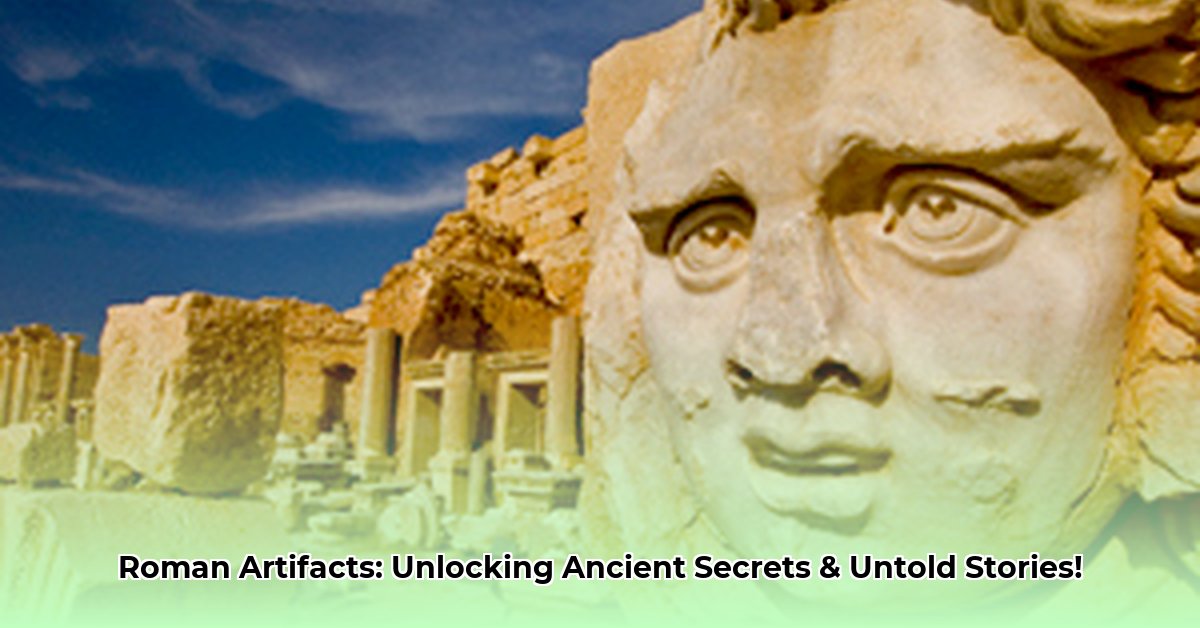
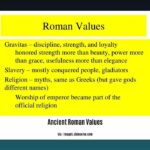
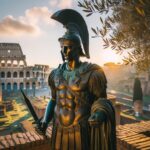



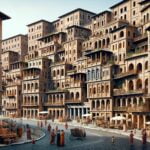

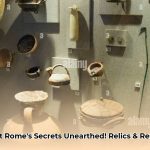


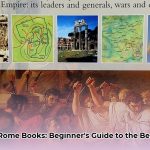
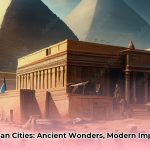

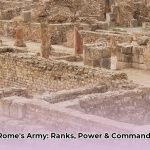
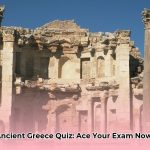

1 thought on “Whispers from the Past: Ancient Roman Artifacts Unlock Empire’s Secrets & Stories”
Comments are closed.